If you’re a pizza lover, you know that there’s nothing quite like the combination of a crispy crust, tangy tomato sauce, and gooey cheese.
But if you’re also one of the millions who experience acid reflux at least once a month, you might find that your love for pizza comes with a side of discomfort.

Highlights
- Behold the cheesy temptation: A single slice from a medium-sized pizza can carry about 3 to 4 ounces (85 to 110 grams) of cheese.
- Enjoy pizza in moderation and pair it with a fresh salad to balance your meal and minimize acid reflux triggers.
- When it comes to tomato sauce, a chef’s heavy hand can be your downfall. Opt for just a whisper of sauce to savor the flavor without the flare-up.
In this article:
How Does Pizza Affect Acid Reflux?
Ever had that feeling where, after indulging in a slice (or maybe three) of pizza, it seems like your stomach is starting a little revolt?
That’s acid reflux for you, also known as gastroesophageal reflux disease (GERD). It happens when stomach acid decides to take a detour back up into your esophagus, leading to heartburn and a bunch of other not-so-fun feelings.
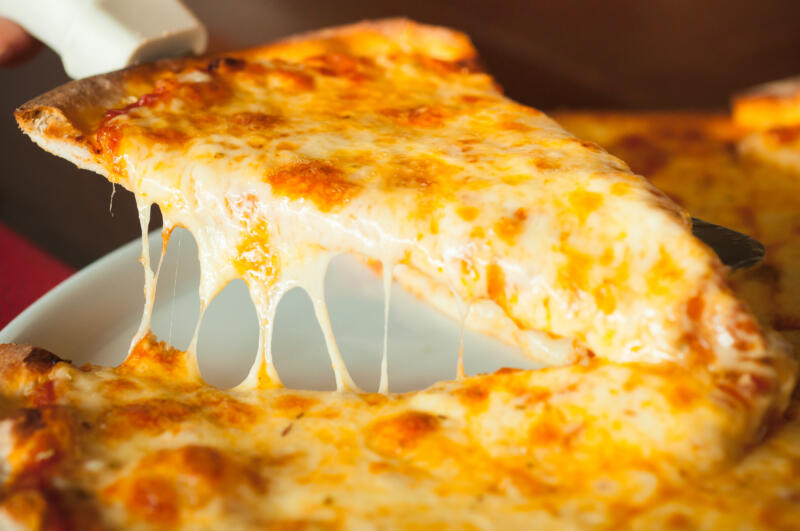
Now, why does pizza, of all things, seem to stir up trouble? It’s all in the ingredients.
Certain foods have a knack for kicking stomach acid production into high gear. Here are the culprits:
- Cheese: As one of the main ingredients in pizza, cheese is high in fat, which can delay stomach emptying and increase the risk of acid reflux.
- Spicy Toppings: Spices like garlic, chili peppers or pepperoni can stimulate the release of stomach acid, leading to heartburn.
- Fatty Meats: Similar to cheese, fatty meats like pepperoni and sausage can slow down digestion and promote acid reflux.
- Tomato Sauce: Tomatoes are naturally acidic, and when used as a sauce on pizza, they can contribute to the acidity in your stomach.
- Pizza Dough: Though primarily made of benign ingredients like flour, water, yeast, and salt, and not a direct trigger for acid reflux, consuming it in large amounts or when undercooked can elevate stomach pressure and potentially lead to reflux symptoms. Styles with more dough, such as Chicago deep-dish or Neapolitan pizza with its sizable, sometimes not crusty borders, may heighten this risk.
The relationship between pizza consumption and acid reflux isn’t just about the ingredients, though.
Eating pizza quickly, in large amounts, or late at night – can also play a role in triggering acid reflux.
Preventive Measures and Tips
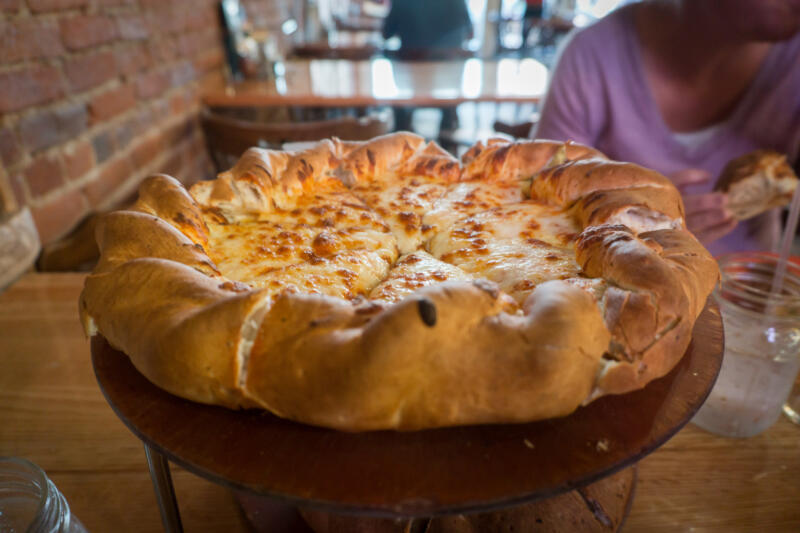
While pizza can contribute to acid reflux, that doesn’t mean you have to give it up entirely. Here are some tips to help you enjoy your favorite food without the discomfort:
1. Eat in Moderation
Instead of devouring half a pizza, try having one or two slices and supplementing with a side salad. This can help prevent overeating, which is a common trigger for acid reflux. The fiber in the salad can help absorb stomach acid and reduce the likelihood of acid reflux symptoms.
2. Choose Your Pizza Wisely
To keep enjoying your pizza while managing acid reflux, it’s all about making smart choices.
Lean towards a thin crust instead of a thick one; this choice can significantly reduce the amount of dough you consume, which is easier on your stomach.
For example, think about the difference between a classic New York-style thin crust and a hearty Chicago deep-dish. The former is much lighter and can be a better option for those with sensitive stomachs.
Consider going light on the cheese or even opting for a cheeseless pizza. You’d be surprised how flavorful a pizza can be with the right combination of toppings, even without the cheese.
Also, rethink the sauce. A lighter, less acidic sauce can make a huge difference in how you feel after your meal.
Not every pizza has to be drenched in tomato sauce; a light coating can provide the flavor you crave without the discomfort that can come with too much acidity.
Plus, many pizzerias now offer whole grain or gluten-free pizzas, which might be gentler on your stomach.
3. Be Mindful of Toppings
While pepperoni and extra cheese might be tempting, they can exacerbate acid reflux. Instead, opt for leaner meats like chicken or turkey, and load up on veggies, which can help neutralize stomach acid.
4. Avoid Late-Night Eating
Try to finish eating at least three hours before you go to bed. Lying down too soon after eating can make it easier for stomach acid to flow back into your esophagus.
5. Stay Hydrated
Drinking plenty of water while eating pizza can help dilute stomach acid and reduce symptoms of acid reflux.
6. Elevate Your Head
If you’re prone to nighttime acid reflux, consider using a wedge pillow or elevating the head of your bed. This can help keep stomach acid where it belongs— in your stomach.
7. Exercise Regularly
Regular physical activity can help manage acid reflux by promoting healthy digestion and reducing stress, which can contribute to acid reflux.
Extra weight, especially around the abdomen, can put pressure on your stomach and cause acid reflux. Maintaining a healthy weight can help alleviate these symptoms.
Pizza and Esophageal Sphincter
When it comes to pizza and acid reflux, it’s not just about the ingredients on your plate.
The way your body processes these ingredients plays a crucial role too. One key player in this process is the esophageal sphincter, a ring-like muscle at the lower end of your esophagus.
What Is the Esophageal Sphincter?
The esophageal sphincter, also known as the lower esophageal sphincter (LES), serves as a gatekeeper between your stomach and esophagus.
Its main function is to prevent acid reflux by closing off the esophagus after food passes into the stomach.
This barrier prevents stomach acid from flowing back into the esophagus, which can cause heartburn and other acid reflux symptoms.
However, certain conditions and foods, including pizza, can impair the function of the esophageal sphincter, leading to acid reflux.
How Does Pizza Impact the Esophageal Sphincter?
Pizza, particularly those topped with high-fat meats and processed foods, can impact the function of the esophageal sphincter.
These ingredients can increase stomach acid production, which in turn can cause the sphincter to relax and allow acid to flow back into the esophagus.
For individuals with acid reflux, this can exacerbate symptoms and lead to discomfort after eating.
Spicy Pizza and Acid Reflux
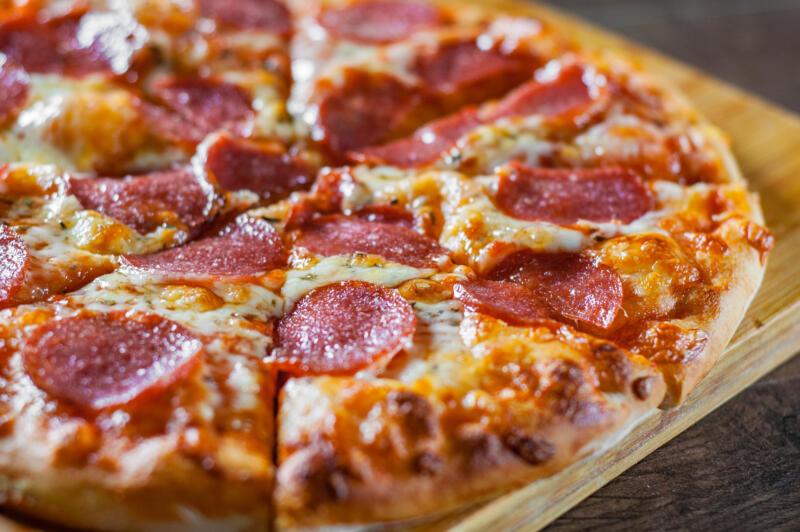
The spices that give pizza its kick, like those found in pepperoni or hot chili sauce, can be a direct ticket to discomfort for those with sensitive stomachs. Here’s why:
- Stimulation of Acid Production: The capsaicin in spicy toppings like pepperoni or chili peppers can stimulate your stomach to produce more acid. This increase in acid can lead to more severe reflux episodes.
- Esophageal Irritation: Spices in pizza, especially when used liberally in the sauce or toppings, can irritate the esophageal lining. This irritation can exacerbate the discomfort and pain associated with acid reflux, making symptoms more pronounced.
What Are Some Alternatives to Eating Spicy Pizza for Those with Acid Reflux?
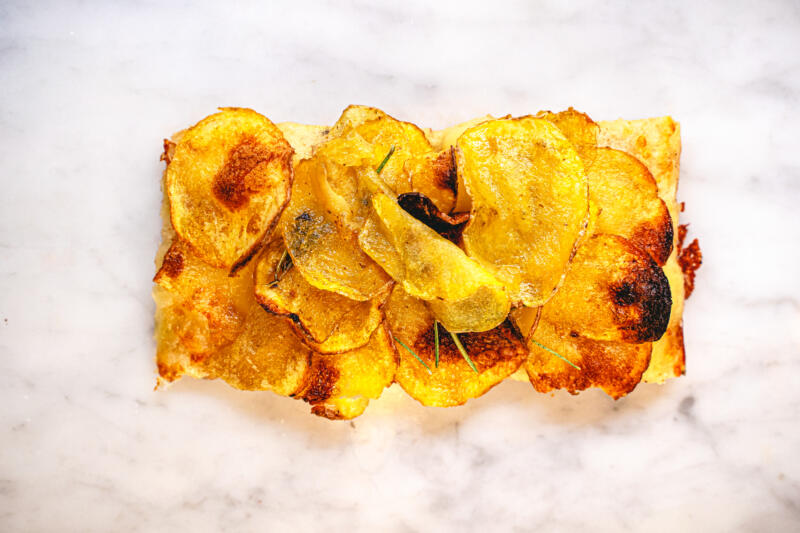
If managing acid reflux is on your agenda, it might be best to skip the spice and go for a gentler flavor profile on your pizza.
Consider using milder toppings like potatoes, mushrooms, or olives. Lean proteins like chicken or turkey can also be a good choice.
Adding more vegetables to your pizza not only reduces the heat but also adds fiber, which can help control acid reflux.
How Do Fatty Foods in Pizza Affect People With Acid Reflux?
Ever stopped to think about just how much cheese, meat, and other toppings you’re actually getting with each slice of pizza? It’s a delicious dilemma, but for those with acid reflux, it’s also a bit of a balancing act.
Fatty delights on your pizza, like those irresistible high-fat meats, gooey cheese, have a knack for taking their sweet time to leave your stomach. This slow exit strategy means your stomach gets busy producing more acid.
And then there’s the processed food factor — often loaded with salt, these ingredients don’t just add flavor; they might be nudging you closer to GERD, the chronic heavyweight champion of acid reflux.
The end game? That extra slice might just bring along a bout of heartburn, discomfort, and a lineup of other acid reflux symptoms.
Are There Any Low-Fat Alternatives for People With Acid Reflux Who Want to Eat Pizza?
Why Is Tomato Sauce a Common Trigger for Heartburn Symptoms in People With Acid Reflux?
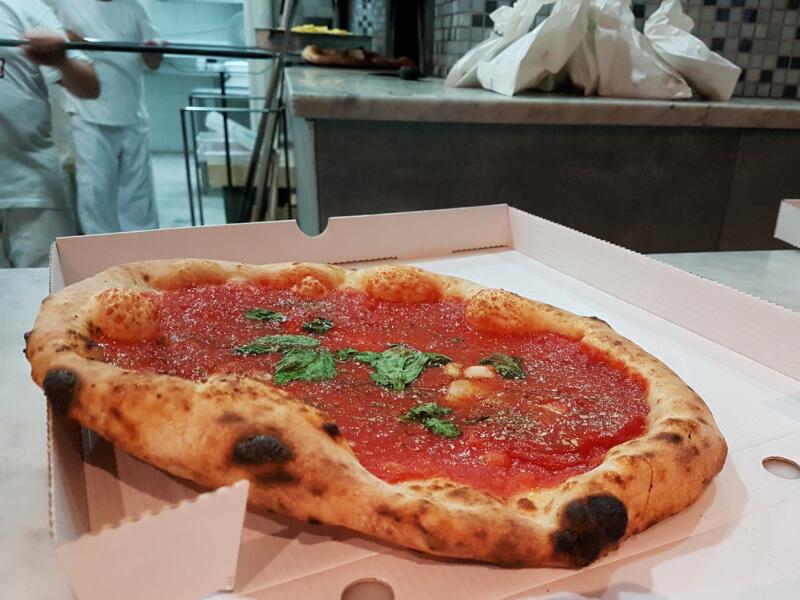
Tomato sauce is a common trigger for heartburn symptoms in people with acid reflux due to its high acidity levels. This acidity can increase the production of stomach acid, leading to discomfort and heartburn.
Furthermore, acidic foods like tomato sauce can weaken the esophageal sphincter, the muscle that prevents stomach acid from flowing back into the esophagus, exacerbating acid reflux symptoms.
Dairy Products, Wheat Flour, and Vocal Cords
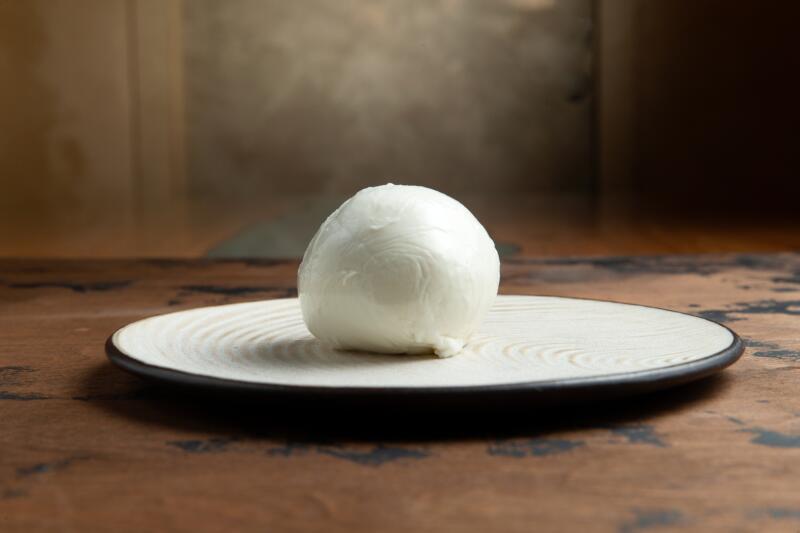
When it comes to acid reflux, it’s not just about the discomfort in your stomach. Ingredients like dairy products and wheat flour, both common in pizza, can also affect your vocal cords.
Dairy products, such as cheese and cream, can lead to increased mucus production, which can cause throat irritation and potential damage to the vocal cords in individuals with acid reflux.
Specific dairy products commonly found on pizza, like mozzarella and parmesan, can exacerbate these symptoms due to their high fat content.
Wheat flour, the primary ingredient in most pizza crusts, can also contribute to acid reflux symptoms. For some individuals, the gluten in wheat flour can cause inflammation and damage to the vocal cords.
However, alternatives like whole wheat or gluten-free flour can be a good option for those sensitive to traditional wheat flour.
Remember, it’s important to consult with a healthcare provider to determine the best course of action for managing acid reflux.
Everyone is different, and what works for one person may not work for another.
Closing Thoughts
Navigating the world of food when you have acid reflux can be challenging, especially when it comes to universally loved foods like pizza.
However, understanding the connection between pizza and acid reflux can help you make informed decisions about your diet.
By being mindful of your pizza choices, paying attention to potential triggers, and implementing lifestyle modifications and medical treatments, you can manage your acid reflux symptoms and still enjoy a slice now and then.
Do you have any other tips for managing acid reflux?
Have you tried any of the techniques we mentioned?
Please feel free to leave your comments and questions below.